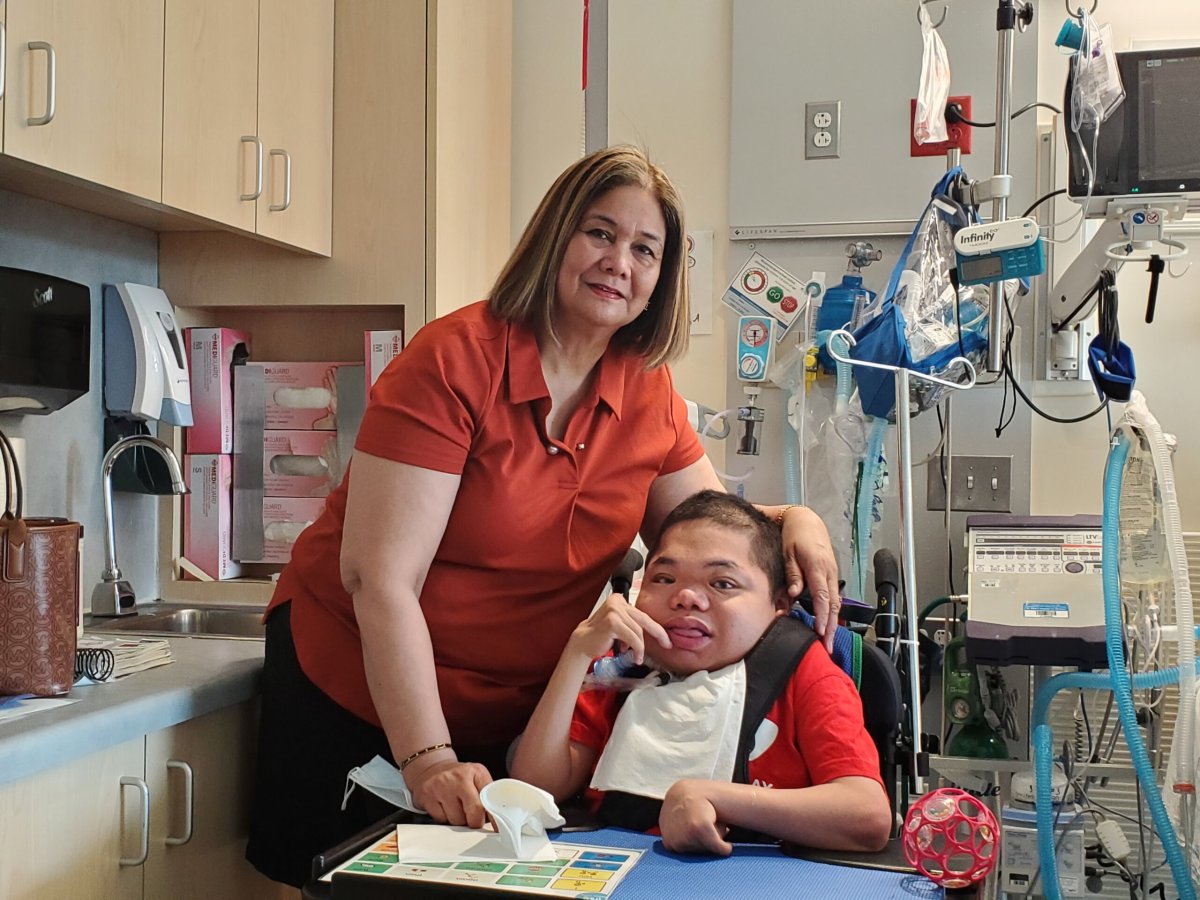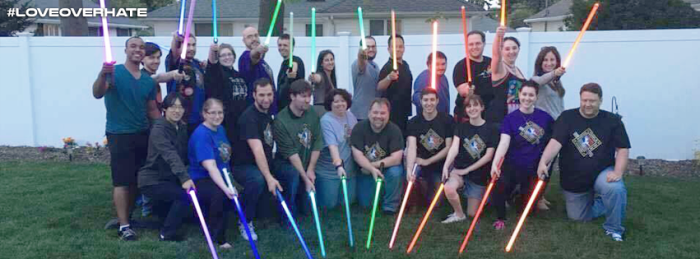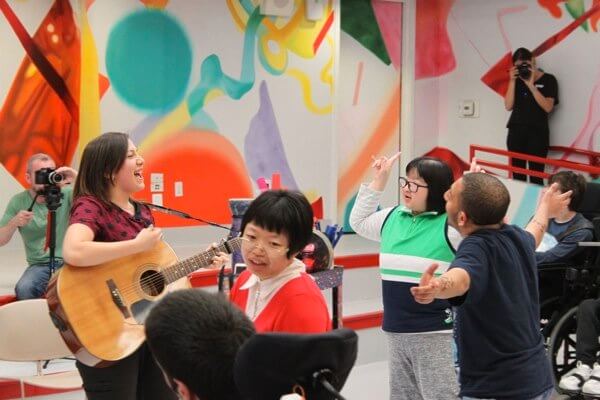Helen Evangelista’s son Matthew has long been a patient at St. Mary’s Hospital for Children in Bayside, where he receives treatment for Sly Syndrome. Thanks to breakthroughs in treatment for those suffering from this rare illness, as well as Helen being able to connect with others who know people living with Sly Syndrome, she is very optimistic that Matthew will be able to live a long and happy life.
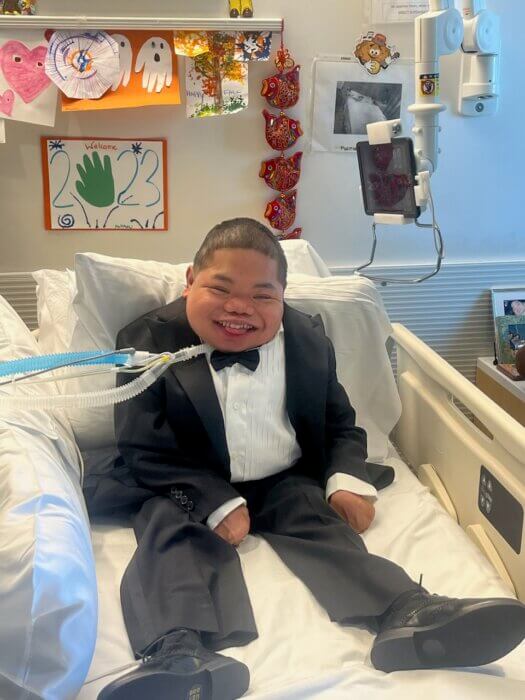
According to Helen, Matthew was diagnosed with this paralyzing disease when he was just 5 months old. As a result of his illness, Matthew suffers from chronic respiratory failure, developmental delays, asthma and limited motor function. He received spinal surgery to correct his paralysis before being transferred to St. Mary’s, where he has been able to receive specialized care, therapies, support and education.
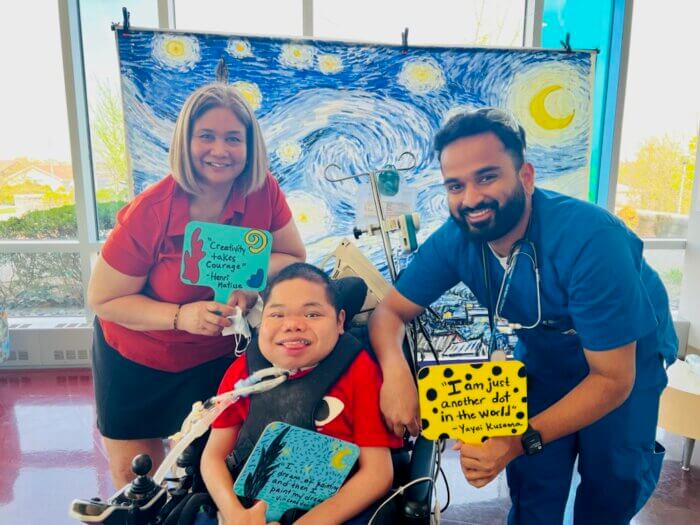
Now 21 years old, Matthew’s motor functions have shown improvement in recent years. He’s also been hard at work attempting to be able to speak.
When Matthew was diagnosed with Sly Syndrome, Helen’s niece, a nurse at Northwell Health, wanted to create a foundation for him. The Matthew Evangelista Foundation was created with the goal of raising public awareness on this rare illness and finding a cure. It was through this foundation that Helen met Dr. Emil Kakkis, who she credits for playing a big role in helping to improve Matthew’s condition.
Dr. Kakkis is the founder, CEO and president of Ultragenyx Pharmaceutical Inc. He is also the founder of the Everylife Foundation for Rare Disease.
“[Dr. Kakkis] promised us that he was going to make a treatment or cure for [Matthew],” Helen said. “No pharmaceutical [organization] wanted to do this because [Sly Syndrome] was so rare and there was no money in it. I continued to go to conferences just to learn how o take care of my son.”
It was through one of the MPS Society conferences that Helen became familiar with scientists working with people suffering from Sly Syndrome. Many of these subjects started treatment at a young age, but are now much older. This helped to give Helen hope that her son could still live a long life.
Dr. Kakkis eventually found a new type of treatment medication for Matthew, assigning Helen to oversee her son throughout the process. Matthew began receiving the infusion treatment around 2013. However, the treatment eventually caused Matthew’s carbon dioxide levels to be too high. Rather than halt the treatment completely, Helen and Dr. Kakkis found a hospital in Cohen’s Children’s Medical Center, where Matthew could be treated and monitored.
While both Helen and Dr. Kakkis were aware of the risks posed by continuing the treatment. They also knew that undergoing the treatment in a hospital setting would help minimize the risks for the patient.
“I told the nurses and doctors who spoke to me about it that I’m still going to do it,” Helen said. “It’s better to try than not to try. I said if anything happens to Matthew, God knows how much I tried. I did this because I want him to stay and live his life.”
According to Helen, after about a week of the infusion treatment Matthew received at Cohen’s, it was discovered that his liver and spleen had shrunk to normal size. At that point, he became more energetic. This also made it easier for him to breathe. After five years of this clinical trial showed positive results, it was approved by the FDA for other patients with Sly Syndrome.
“These people are all getting this treatment because of him,” Helen said. “The treatment is very promising. It’s doing really well. His energy came back. He’s very alert. He’s interacting in school.”
While Matthew’s health has improved thanks in large part to the infusions he receives, Helen still has other long-term milestones she would like to see her son achieve. This includes being able to verbally communicate. He’s already been working on that and is soon expected to receive a device with which to communicate. He received a motorized chair that he has since learned how to motorize himself. She hopes that in the future he will no longer need to use a ventilator.
Success stories of other patients that Dr. Kakkis has helped in the past has Helen very optimistic about her son’s future. She mentioned how one of Dr. Kakkis’ patients for whom he made a treatment for when they were ten years old has since graduated from college, got married and has a job.
According to Helen, Dr. Kakkis told her it’s still too soon to consider this treatment as a sort of cure for patients dealing with Sly Syndrome. At the very least, it is progress in treatment for these patients.

